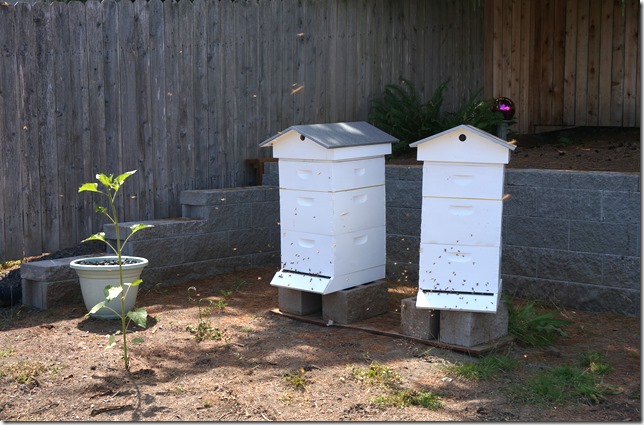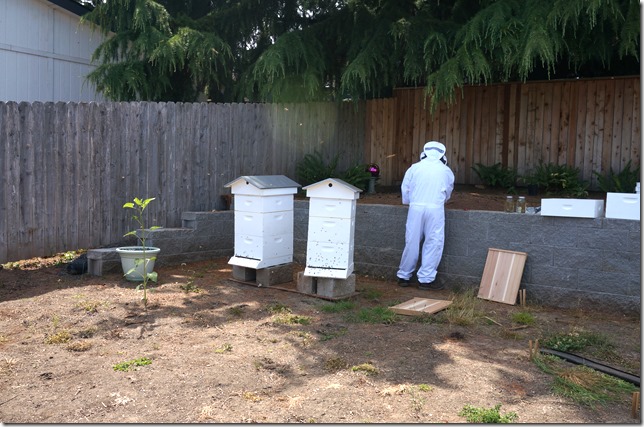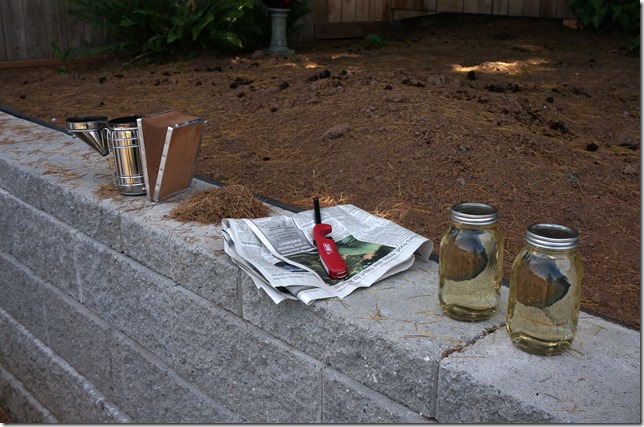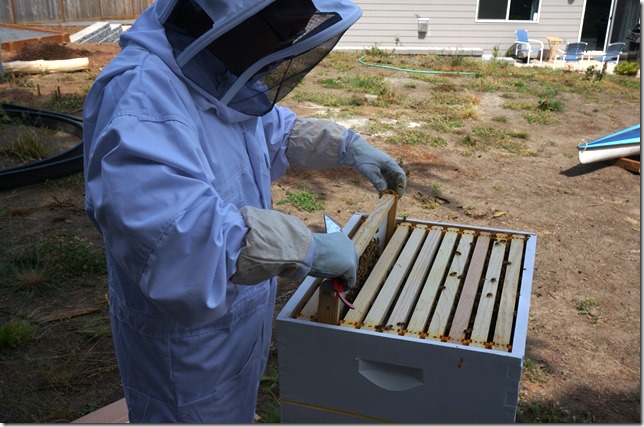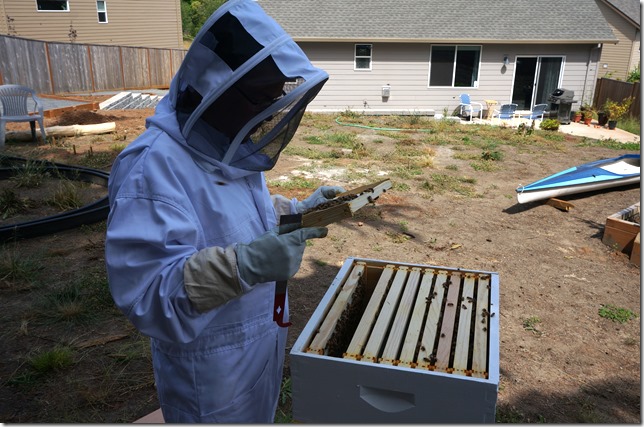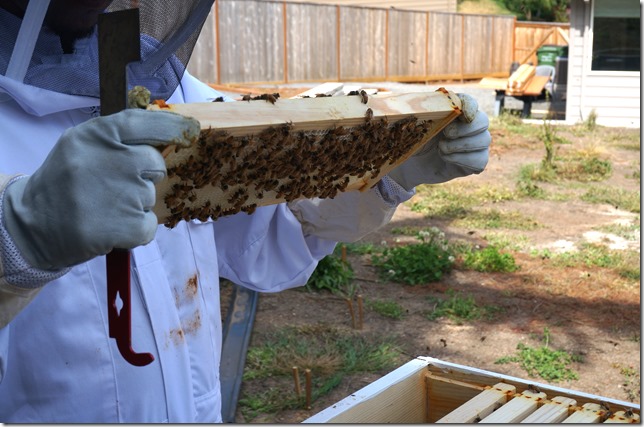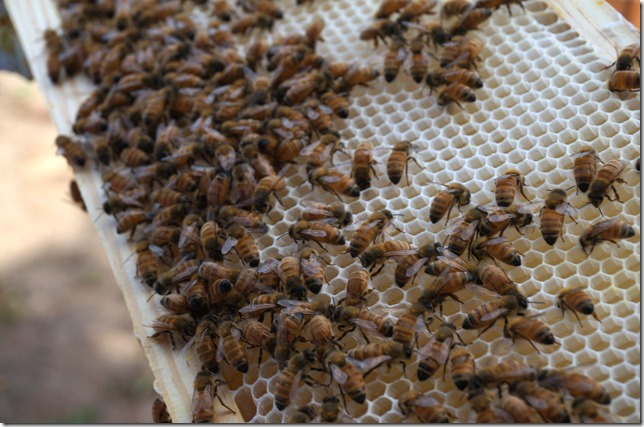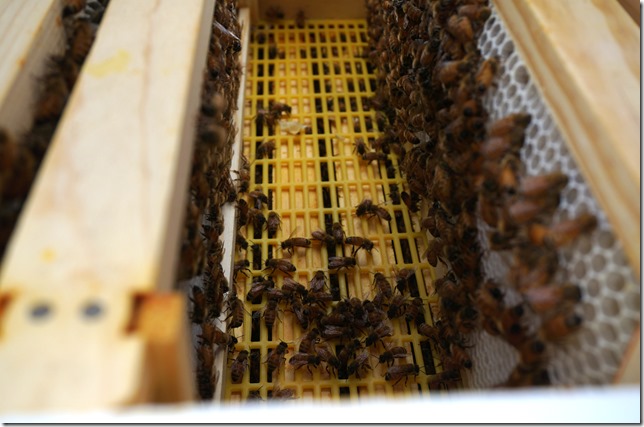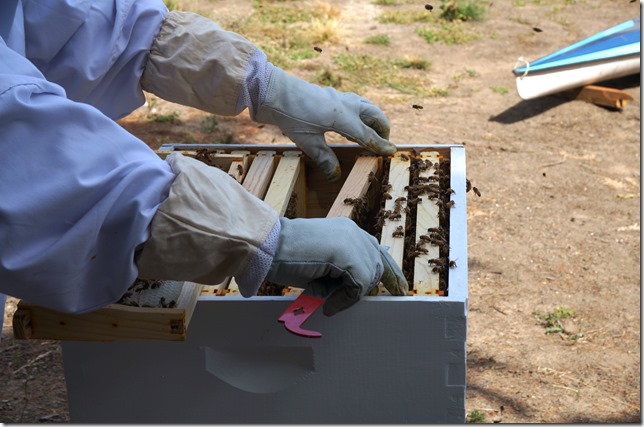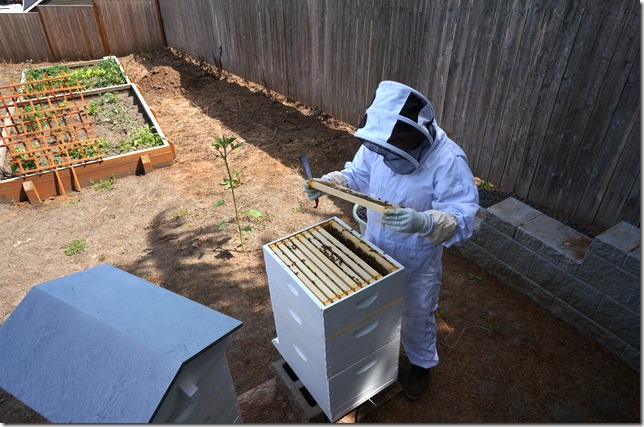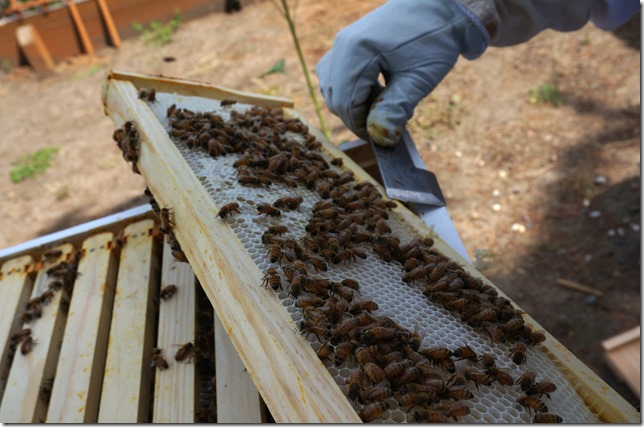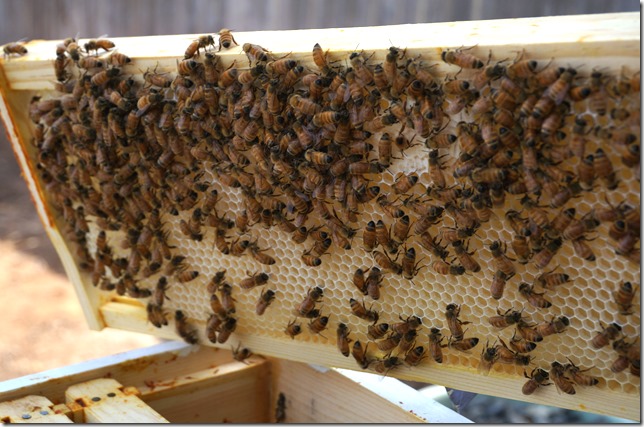The blackberries are blooming and the bees have been busy! It’s a good thing too, we’ve been pretty busy ourselves and haven’t been able to get into the hives as often as we did in the spring. I think we’re also starting to get the hang of this whole “bee keeping” thing and so we’re not as over-protective as we were at the beginning. When you begin to understand that it’s not about any one bee, but instead about the total organism of the hive, you trust that they know how to keep themselves going with very little human intervention.
The weather was great last week, so we figured it was time to check in on Noir (the left hive) and Gris (the right hive). From outside of the hives things look good! The bees are always on a mission and the crowding at the entrance was starting to get a little crazy, think “clouds of bees” waiting to get in, so we removed the excluder and now the bees can come and go all along the bottom entrance as oppose to just one three inch slot.
The Renaissance Man likes to get everything set up and ready to go so that we limit the amount of time that each hive is open. I’ve been doing some weeding lately so the area around the hives is a little cleaner than it has been in the past. Some of you gardeners may also recognize our volunteer sunflower to the left of the hives. I’m excited to see how big it gets!
The smoker, pine needles, newspapers, a lighter, and some sugar water…all tools of the trade!
Since Gris is the smaller hive, we usually get into it first and can often gauge what’s going on in Noir. The Renaissance Man always takes out one frame, and sets it outside of the hive so that he has room to slide the other frames around while inspecting them.
Here he’s checking to make sure that the Queen hasn’t made her way into the upper honey super. As far as we can tell the only thing that’s happening is honey production!
The Renaissance Man is very methodical in his review, looking for any signs larva. I don’t think I’ve pointed this out before, but The Renaissance Man always has his hive, it’s in his right hand. This tool can be used to scrape off comb growing the wrong direction, loosen the hive bodies and frames after you open the hive, and I hear it can also be used to remove bee stings, although I haven’t seen that in action yet.
Here is a close up of the comb being filled with honey. The Renaissance Man says that the frames that are full of honey feel like they weigh about five pounds!
And here is a shot of the Queen Excluder that I described in my last post about the bees. The Queen Excluder is what keeps the Queen from entering the top honey super. It keeps her contained down below in the brood boxes producing larva, while the worker bees are up top producing honey!
Since the bees are often more likely to stay near the middle of the hives to produce honey, it’s important to shift around the frames. The Renaissance Man took some of the fuller frames from the middle and moved them to the outside of the hive so that the bees start working on filling other frames with honey.
After we got done checking Gris, we moved to Noir.
If you look closely toward the back of the frame, some of the honeycomb has been capped. The capped honeycomb looks like a smooth white cover over the comb, that allows the honey to cure. The Renaissance Man also is mindful to clean any excess comb off of the frames.
Here is one last good shot of the bees hard at work filling comb with honey! They’re such magical little creatures and I’m so happy that we have them in our lives. Bees are fun!
